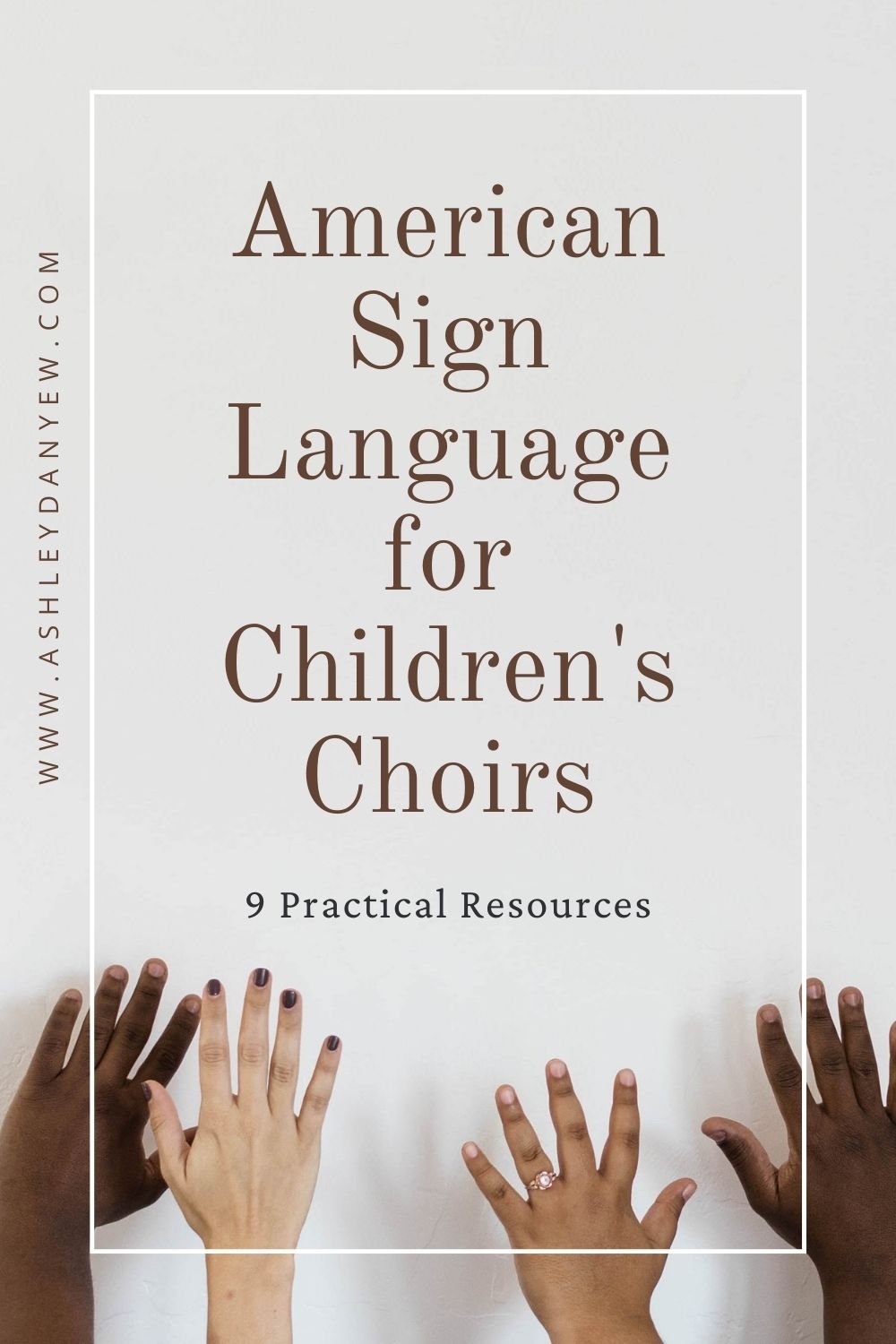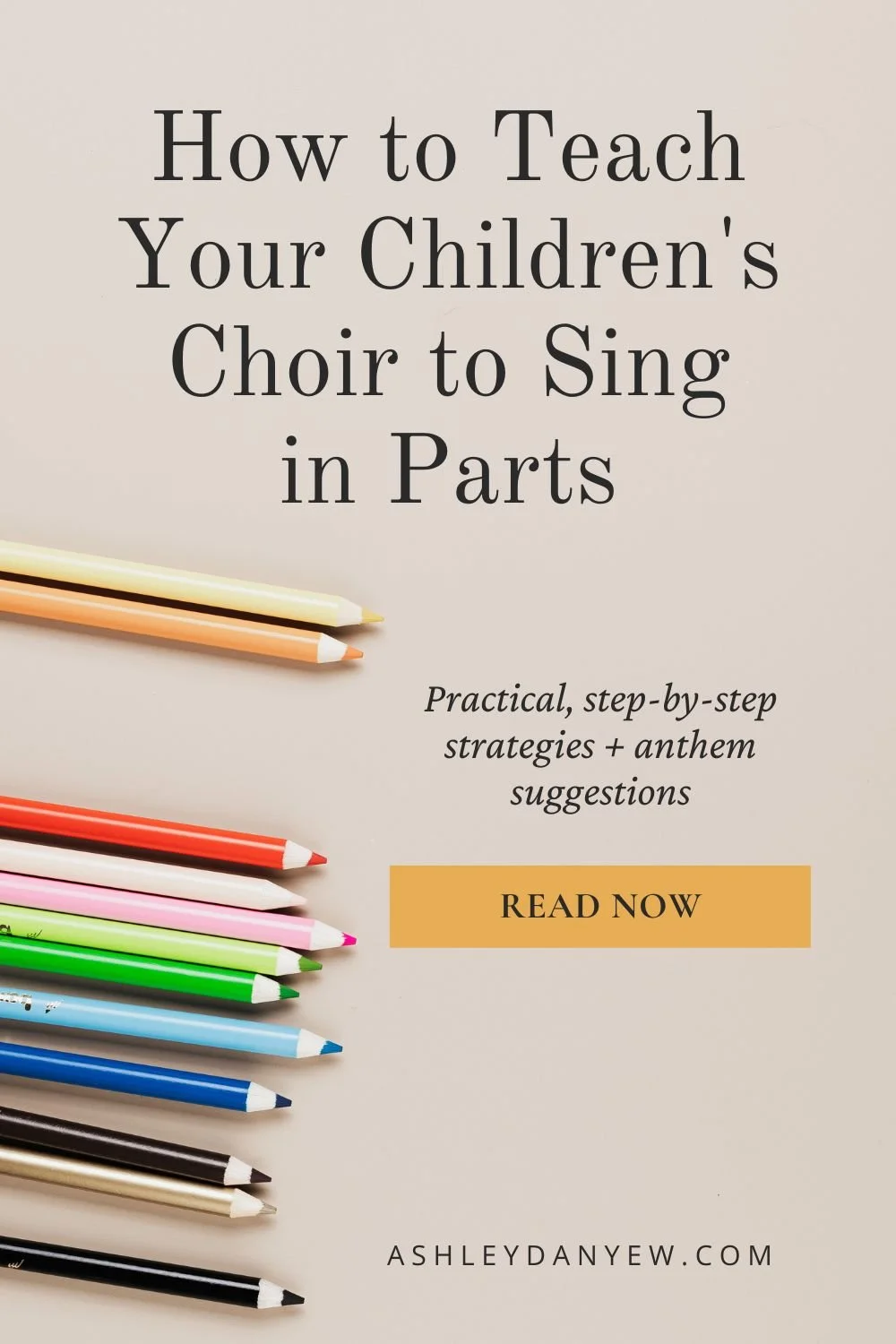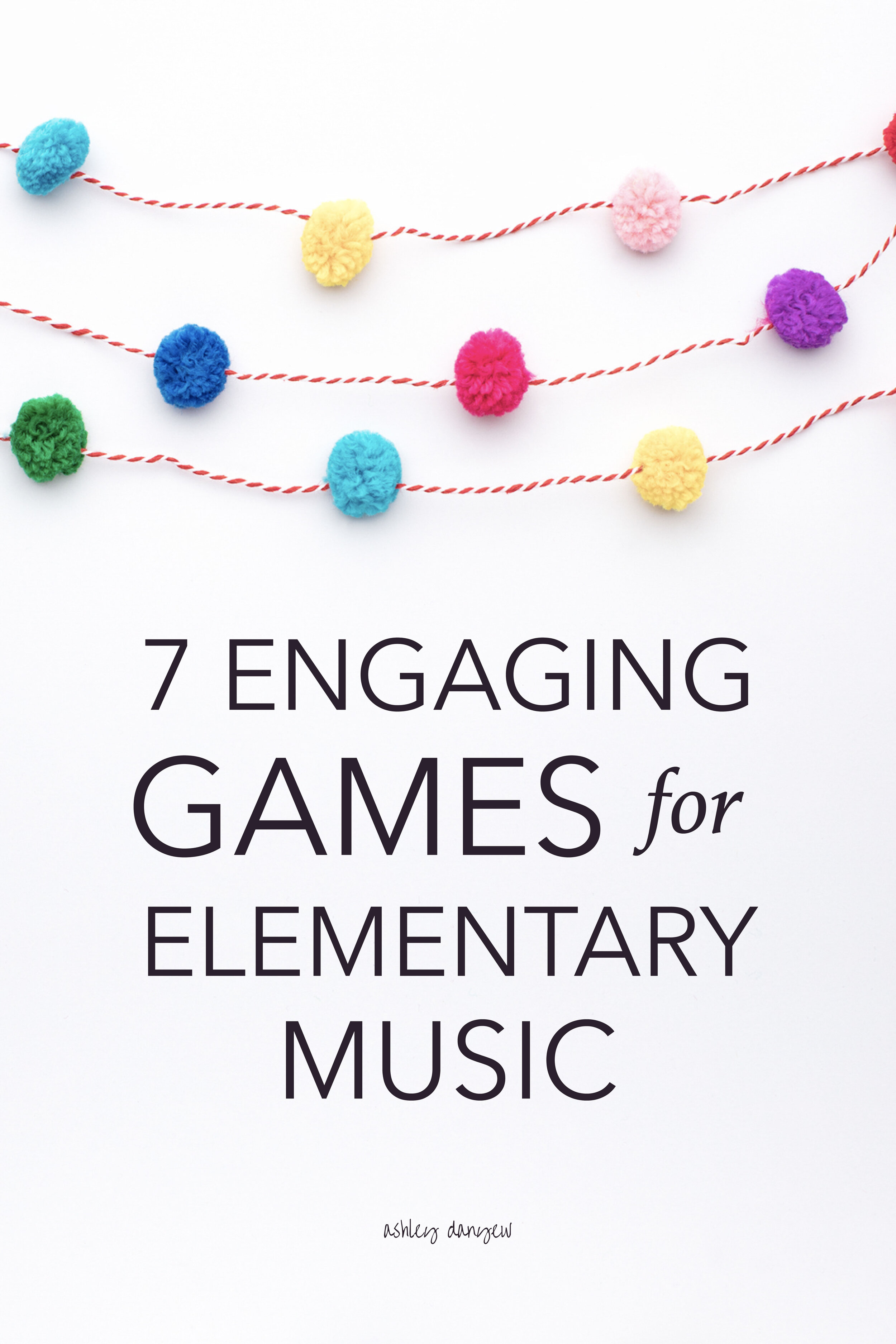Singing is a full-body activity (source). And we know that movement is a valuable tool for helping children understand and engage with music.
This is why so many children’s choir directors and elementary music teachers teach songs and anthems with hand, arm, or body movement of some kind.
Sign language is a natural choice.
American Sign Language (ASL) is a visual form of communication among Deaf communities. ASL signs may use one or both hands/arms. Signs are comprised of hand shapes, orientations, and positions on the body, and many involve movement (source).
This is unique because it brings the words we sing to life; in a way, pairing language with visual art.
It's almost like a form of dance.
To be clear, what I’m describing in this post does not represent everything American Sign Language involves or represents; instead, I’m advocating for teaching signs for select vocabulary words from the text your choir is singing. This is not a substitute for hiring an ASL interpreter.
ASL vocabulary works well with music, bringing new meaning to the text and giving children a tangible, physical way to interact with the music. Having motions to do while singing also helps children stay focused in rehearsal and memorize the music more quickly.
Looking to include ASL vocabulary signs in your children's choir? Here are a few helpful resources for getting started:
Nine Sign Language Vocabulary Resources for Choirs
*Disclosure: I get commissions for purchases made through links in this post.
With Heart and Hands and Voices
Songs with sign language vocabulary for Sunday School, choir, and worship.
ASL Children’s Songs
A wonderful resource from the LDS church, this site features a collection of children's songs with PDF scores, professional recordings (with and without vocals), and ASL video demonstrations. Be sure to look at Tell Me the Stories of Jesus and Beautiful Savior.
HandSpeak
This resource includes a signing dictionary with video demonstrations, articles on signing and Deaf culture, resources for signing phrases and sentences, and much more.
We Sign: Christmas Carols
Perfect for children's choir plays, caroling, and special Christmas services.
Printable ASL Alphabet Cards
These are great to use in songs or anthems where you spell a word (e.g. “l-o-v-e”). You could also use them to create bulletin board art or banners to hang in your rehearsal space (e.g. “w-e-l-c-o-m-e”, “c-h-o-i-r”, or “s-i-n-g”).
Printable ASL Number Cards
Similar to the card set above, these are great for counting songs. Use them when learning the 10 Commandments, counting the Fruits of the Spirit, quoting Scripture verses, or for a secular counting song or chant.
ASL Hymns
Another resource from the LDS church, this site includes a varied list of hymns with PDF scores, professional recordings (with and without vocals), and ASL video demonstrations. Titles include:
Away in a Manger
Come, Ye Thankful People, Come
Christ the Lord Is Risen Today
For the Beauty of the Earth
Hark! The Herald Angels Sing
Joy to the World
Doxology
Silent Night
Signing Savvy
This helpful signing dictionary features thousands of video demonstrations plus additional resources for finger-spelling, numbers, and sentences.
Signing Bible Songs
A DVD resource with lots of popular children's choir songs, including Jesus Loves Me, Jesus Wants Me for a Sunbeam, Lord I Want to Be a Christian, and He's Got the Whole World In His Hands.
The DIY Approach: Add ASL Vocabulary to Any Piece
The above resources are great for popular children's songs, hymns, and Christmas carols, but what about anthems? With the help of the Internet, you can easily add ASL vocabulary to any piece.
How to Add Sign Language to any Hymn, Song, or Anthem:
Choose an anthem you're working on and study the text for a few minutes.
Sing or play through the melody and get a sense of tempo, text declamation (how fast the pace of the text is), and important words.
Select a few keywords in each phrase and look up signs using this handy video dictionary.
Jot down a few notes in your music to help you remember each sign.
Practice singing through the anthem and signing before introducing it to children.
A Practical Example
Here is an example using Mark A. Miller's "I Believe" (a great anthem for combined choirs!):
I believe in the sun, I believe in the sun
Even when, even when it's not shining.
I believe in love, I believe in love
Even when, even when I don't feel it.
I believe in God, I believe in God
Even when, even when He is silent.
This anthem has beautiful text, right? I chose keywords from each phrase to sign (marked in bold below):
I believe in the sun, I believe in the sun
Even when, even when it's not shining.
I believe in love, I believe in love
Even when, even when I don't feel it.
I believe in God, I believe in God
Even when, even when He is silent.
Using the signing video dictionary, I looked up each word:
believe
sun
even when (even though in the dictionary)
not
shining
love
feel
God
silent
I sang through the phrases in my head as I watched the video for each sign to see how they would fit together.
A Few Final Thoughts
1 - Show signs with the opposite hand/arm.
This way children can mirror you. For instance, the sign for "God" is done with your right hand (thumb side of the hand facing you, moving from forehead to chest). To teach this to your choir, show the sign with your left hand so children will mirror you with their right hands.
2 - Don't overdo it.
If you're adding ASL vocabulary to one of your anthems, pick a few keywords to sign for each phrase. Don't take away from the melody. Let the movement be natural, not frenetic.
3 - Be true to the text.
If the text reads "even when it's not shining," don't just sign the word for "shining." You’re creating more of a sense translation by not signing every word, but try to be as true to the text as you can.
I’d love to hear from you:
Have you used ASL vocabulary with your children's choir? What are your favorite pieces to sing and sign?





































